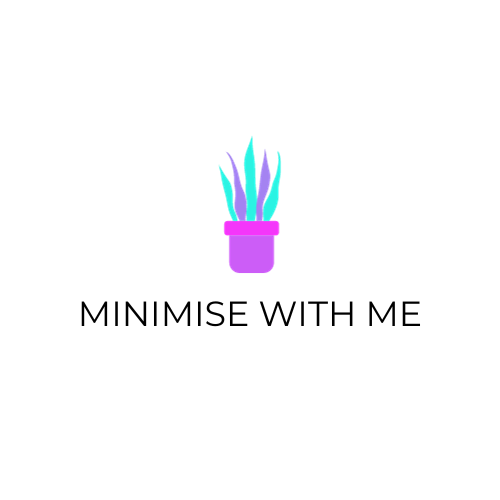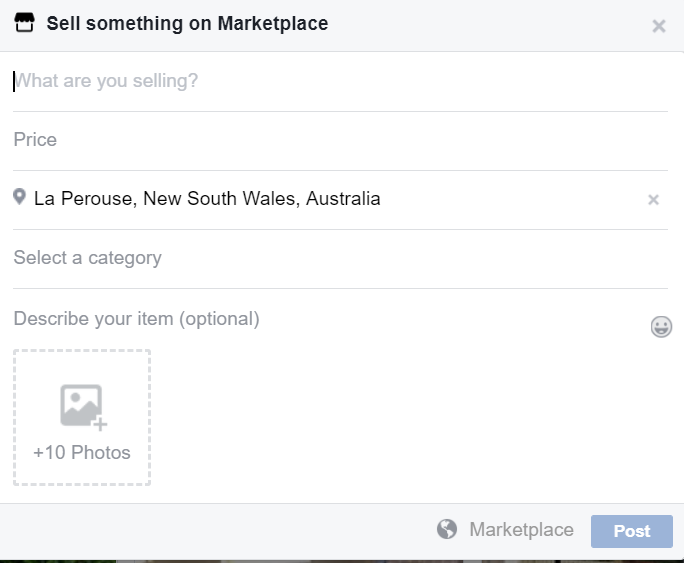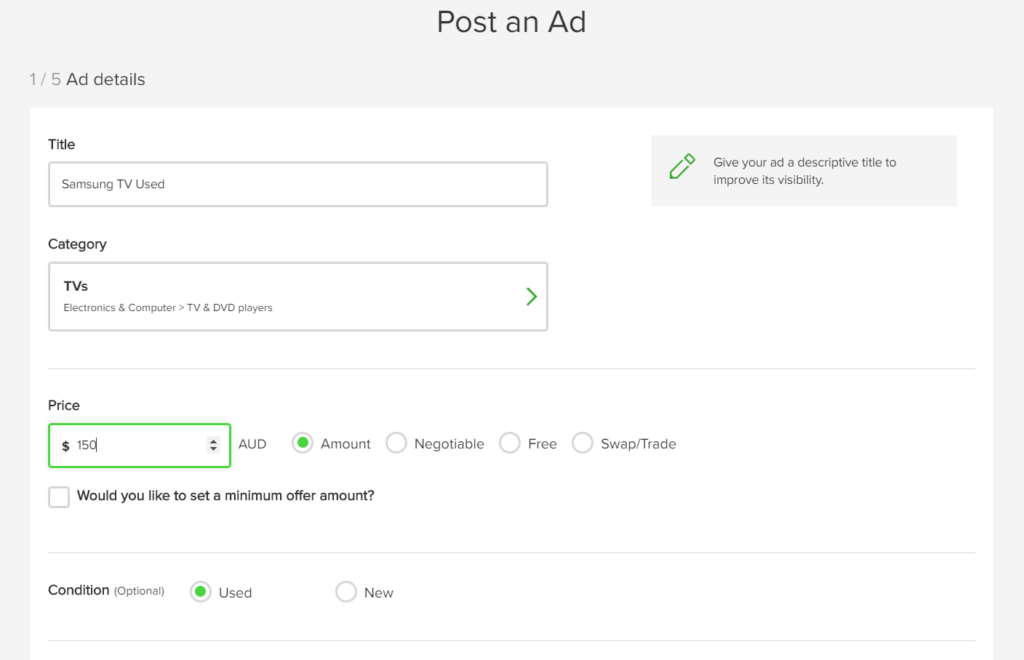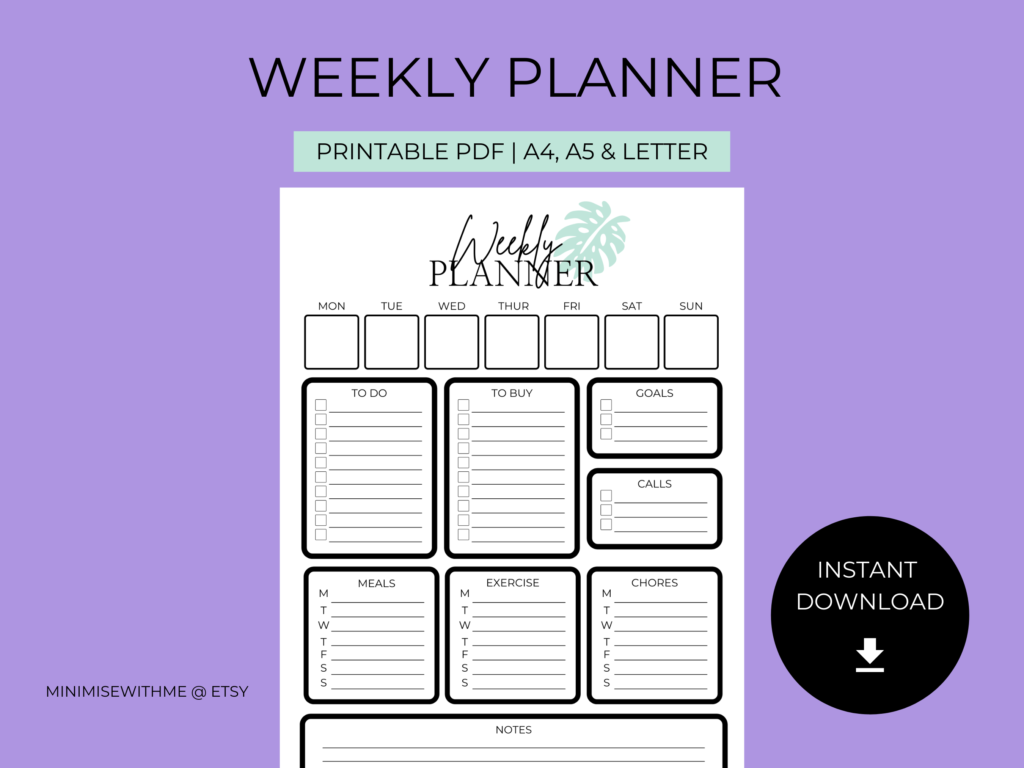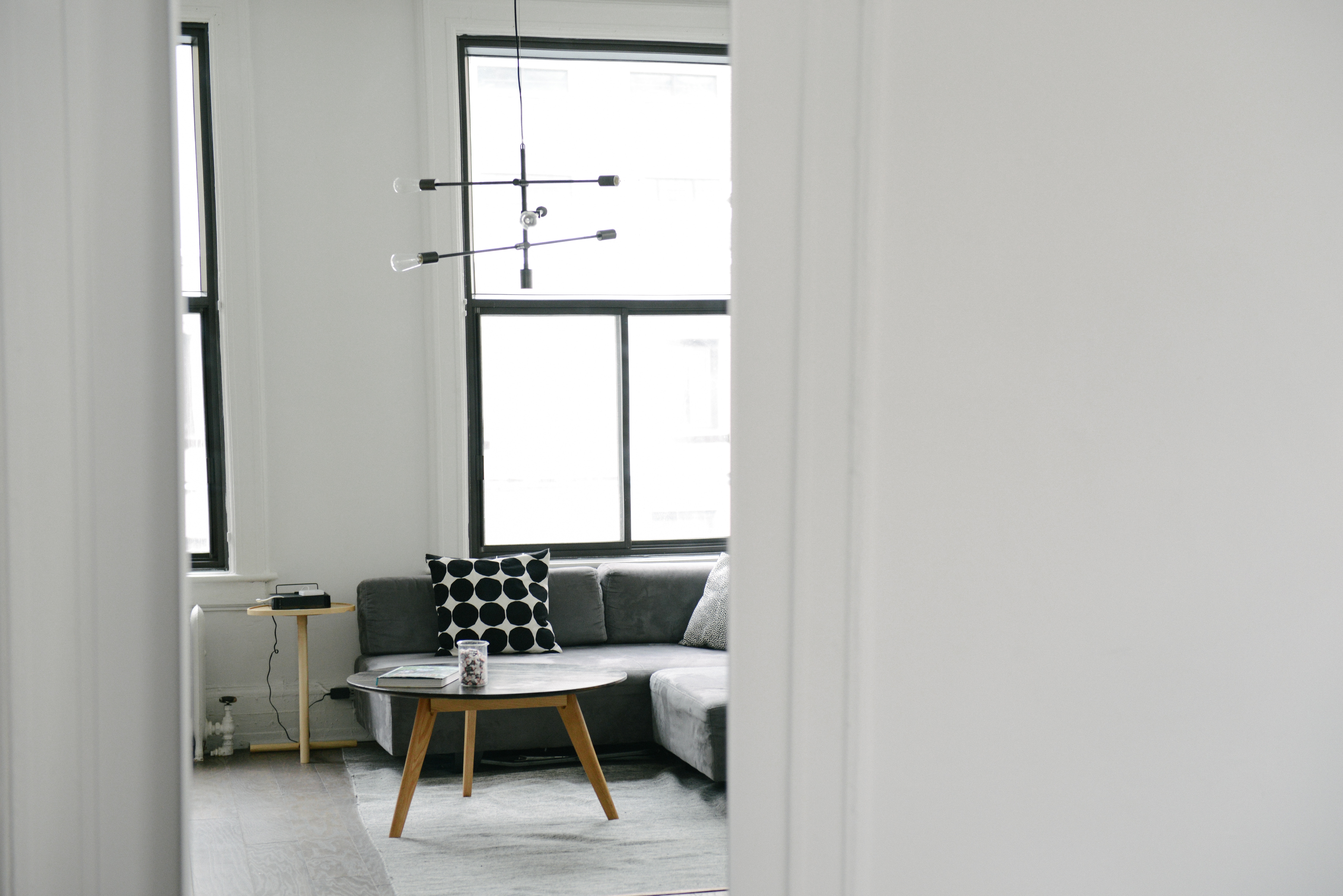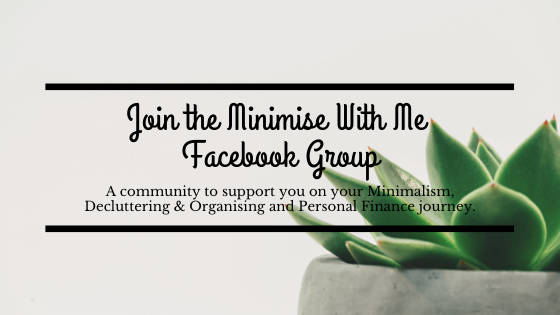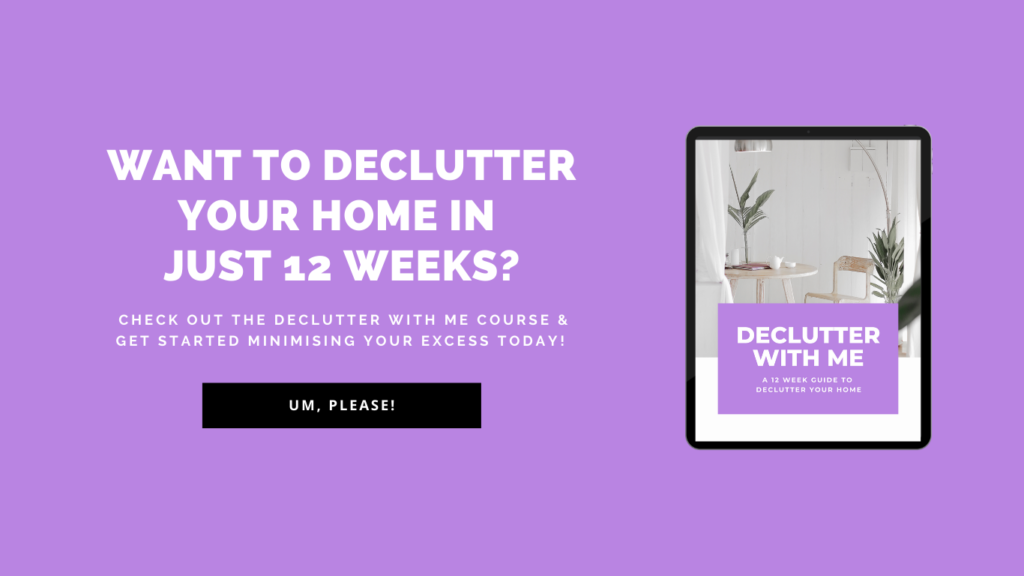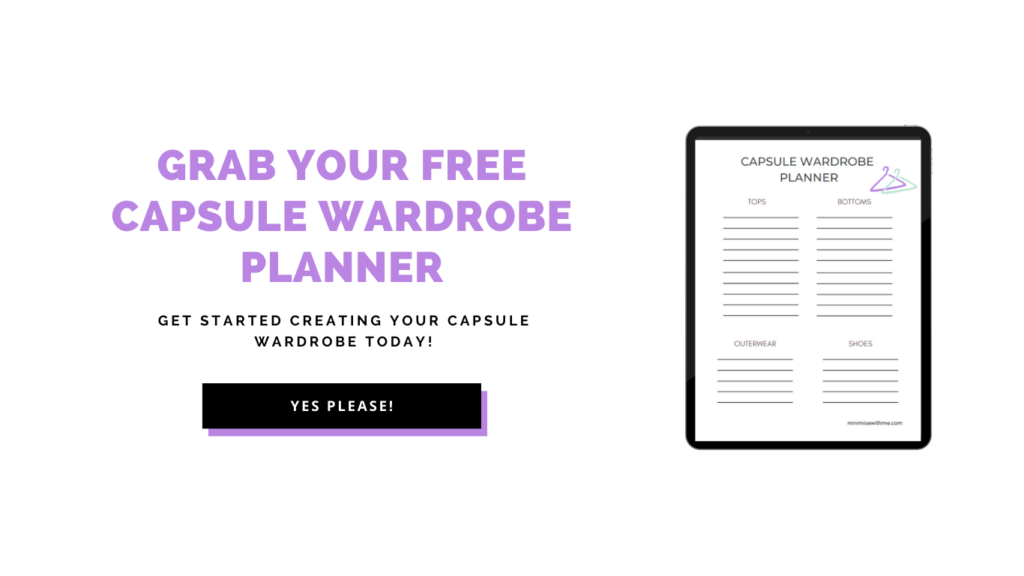It’s been about seven years now since I discovered my minimalist journey so I thought I would reflect back on how my habits had changed over that time and the things I used to do that now seem weird to me as a minimalist.
Of course, the habits I used to have were what many of us would consider normal, but that now seems wasteful to me, whether that be environmentally or wasteful of my time or money.
Living a minimalist lifestyle is by no means easier than not. It takes a lot of work for me to make fairly small purchases, but I know that in the end, being a more mindful consumer has added immense value to my life and for that reason, I will continue to be as intentional as I can be with my daily consumer decisions.
Of course, by no means am I perfect or encouraging anyone to give up consumption altogether. These are just the personal changes I have noticed over the past five years that may help you to add value to your own life and I hope that they do 🙂
Things I Used To Do That Now Seem Weird To Me As a Minimalist
- Buying enough food for the apocalypse
When I discovered Minimalism, it soon enveloped so many other areas of my life, including my grocery shopping. I realised how wasteful I had been with shopping in the past and was constantly annoyed at how much food I would end up throwing away each week. It was horrible for the environment, wasteful in terms of being a valuable resource and a complete waste of money.
Shopping used to be guesswork for me. I’d come home from the store and realise we had bought more than we could fit in our pantry or fridge or freezer. Finding anything was stressful. And trying to cook meals when you have 4 weeks of food at the ready was not any easier.
Now when we shop we are a more well-oiled machine.
We generally shop every Sunday. Having a routine has been a huge game-changer!
We look at what we do and don’t have, so we don’t come home with excessive amounts of food we didn’t need.
We Meal Plan around our schedule for the week so we know what meals we need to buy and what we don’t and plan our shopping list accordingly.
We buy only what we need for the week ahead. This is important for two reasons, it gives us a cut-off for our shopping list. If we need something on Monday in 7 days it can wait for our next shop. It also means that we aren’t buying food that might not get eaten. Plans change, so we avoid buying food too far in advance in case our plans do change and we end up throwing the extra we bought out.
Our new shopping habits have helped us to save thousands on our grocery bill over the past few years and will continue into the future and has helped us to ensure the food we are buying, goes into our mouths and not the bin or landfill.
2. Buying clothes without much thought as to what I already had
Clothes shopping without intention is one of the things I used to do that now seems weird to me as a minimalist. Before I discovered the minimalist lifestyle, my shopping habits looked a little like this: I’d have a spare couple of hours so would proceed to the local mall and my favourite clothing stores. I would pick out some clothes I liked without really asking questions like; Do I really need this? Is this me? How much of my clothing budget do I have left to spend? Do I have something similar at home to this already?
If the change room line was too long, there was no way I was going to be bothered to wait so I’d just walk away and leave the store…
Jokes! Almost had you there. I would just buy the item telling myself if it doesn’t fit I would return it. Whilst standing in line to pay, I would notice some tops on sale and again, grab some without thinking, justifying it as they were only $10 each, how could I resist?!
I would then come home and realise that I already had 4 stripey shirts that looked just like the one I grabbed at the counter. And that the other item I bought didn’t fit. Sometimes I’d been in such a rush I took the wrong size home. WTF was I doing?? Basically if it fit into my colour scheme of black, white or purple it was coming home with me.
These clothes were then shoved in the bottom of a drawer or back of my wardrobe, never to be looked at again. They had served their purpose – fulfilling my desire to shop, providing me with a moment of entertainment and that rush of nabbing a bargain. But the reality of this scenario wasn’t so simple.
The truth was that I had a wardrobe full of clothes that were ‘not me’.
I owned two pairs of stilettos even though I hate heels, let alone ones I can’t walk in.
I had clothes still with tags on them.
I owned 50 dresses even though 95% of the time I prefer to wear pants or shorts.
My drawers were so packed that closing them was a physical challenge.
I truly had no idea what I even owned. My wardrobe did not represent me.
When I learned about the minimalist lifestyle, I came across the term ‘capsule wardrobe‘ which was an absolute game-changer for me.
I realised that I didn’t need to own 50 of each individual type of clothing and finally understood that the issue with my wardrobe was not a lack of clothing, but that I had too much.
I soon decluttered over 50% of my wardrobe and created a new capsule wardrobe for every season during the year. I now only shop for gap pieces for my wardrobe and know what I need to buy before I even leave my house.
This has made getting ready each day such a breeze, knowing exactly what I own, and that most pieces can be mixed and matched. It has reduced my stress and anxiety. I now love opening my drawers and wardrobe and seeing space. And it has saved me so much money as I used to shop very frequently.
3. Buying shoes in quantity, not quality
In my non-minimalist days, I used to love a good shoe sale. Unfortunately for me, Kmart shoes were basically always on sale, even when they were full-priced because they were so cheap to begin with. And so I would often venture to Kmart and come home with a new pair of shoes. My specialty was buying more flats, and heels that I would never wear (As I mentioned, I actually hate wearing heels – go figure!).
At my worst, when I started my Decluttering Journey I counted 56 pairs of shoes! And that might not seem like a lot for some of your out there, but it was for me.
I remember I used to go shopping with friends and stand outside of the shoe store waiting when they stayed for longer than I had liked as I just found it so boring. My shoes were all over the house. I have some at the front door floor, some in the drawer at our entryway. Some were in our wardrobe and then I had to buy another set of drawers that were in the spare room to store the rest. It was just a disorganised mess.
The silly thing was, that although I often bought shoes, I was never really that much of a shoe person. I was just doing what I had always done and hadn’t caught onto how I was wasting my valuable time and money.
Every time I went out, I’d feel overwhelmed when trying to select from my 50 odd pairs of shoes. Soon I would have a pile strewn across my floor and 9 out of 10 times I would always end up wearing the same select few. Who knew $8 shoes weren’t that comfy? (Apparently me!)
Eventually, I realised how much stress my huge shoe collection was adding to my life.
In my first decluttering session, I got my shoes down from 56 to just 19 pairs. Almost 1/3rd of my original shoe collection. And I quickly realised that I didn’t miss any of them. To my surprise, getting ready became so much easier than ever before.
Over time I changed my shoe shopping habits and stopped buying the cheapest shoes, and instead opted for quality over quantity. Instead of buying 10 new pairs of flats over the year at $10 a pop and not wearing any because they were practically made of cardboard, I would spend $100 on one pair of quality, comfortable flats that I loved.
I can’t tell you how much this simplified getting ready day-to-day!
Since making the change I have never gone back and am pleased to say my shoe collection has never surpassed that initial 19 number! And funnily, now I actually get annoyed when shopping for shoes and only cheap options are available! Quite the transformation ‘;)
4. Think spending money on anything other than physical things was a waste of money
I was raised in a house that didn’t value experiences over things. I had multiple hoarders in my family (love them all but wasn’t the best environment to learn about letting go) and the message to me growing up, that might not have been said in such words but that I picked up on, was that physical things are more valuable than experiences.
And without knowing why at the time, this never really sat right with me. I would consume things like the next person (see shoe shopping habits above ;)), but I also often struggled to spend my money.
Having a January birthday meant that I was bombarded once a year with gift money that I often struggled to spend. Each time I would spend a small amount and wonder why I couldn’t find enough to buy and then throw the rest into my savings.
It took me until my mid-20s to realise that it was okay to not have to buy something you can physically hold onto. I believed from those around me that travel and similar experiences were a waste of money or something out of reach for people like me. It took me until my mid-20s to realise that this wasn’t the case.
When I thought more about it, I realised that I wanted to experience new things. The fact that I didn’t have the newest phone or a trendy wardrobe was okay by me.
I went on my first overseas holiday at 25 to Thailand and have never looked back. Since, we have traveled all over Europe, to New Zealand, Hawaii, and around Australia with more travel planned in the future!
And you know what I discovered when I implemented a new goal to shop more intentionally? I had more money to spend on things that really added value such as travel.
I also spend on services that add value to my life including a gym membership, Spotify, Netflix, and Audible subscriptions.
I may not own a library of books, the latest makeup, designer clothes or live in a McMansion with expensive furniture, but I am living the right life for me and one that aligns with my values.
Spending all my money on physical things was one of the things I used to do that now seems weird to me as a minimalist.
5. Make a big spending decision without researching it thoroughly before buying
We are so lucky that there are so many resources at our fingertips to make more informed purchasing decisions. We have websites completely dedicated to customer reviews of products and companies, YouTube reviews, price comparison websites, and a vast array of info to help us with knowing what is worth our money.
In the past, I would walk into a store and pick an item based on what was written on the in-store ticket and what advice the salesperson could give me. Now, going to the store or purchasing the item online is the last step in the process of consuming. Sometimes I even omit it and just buy online because why leave your home whenyou don’t have to, right?!
I now rarely spend money without researching an item reasonably thoroughly beforehand. I can’t tell you how many reviews I have read just to purchase my microwave and a new mattress.
And by no means is it an enjoyable process. Buying stuff for me is now a chore, but I don’t mind that as it means that if I do buy something, I better really damn well want or need it in order to put in the work to get it (I’ve come a long way from my clothes shopping days :p).
I’ve made my fair share of bad purchasing decisions in the past, and now know that putting in the effort at the start such as reading reviews, asking family and friends for recommendations and price comparisons pays off and means that hopefully, I can keep the item I am purchasing for the long hall.
Buying things without researching them for at least a few weeks in advance is one of the things I used to do that now seems weird to me as a minimalist. I work hard for my money, and there are many things I can do with it: travel, save it, invest it, pay down my mortgage, help others, or work less so I am not keen on splashing it around without doing some thorough research first.
Declutter With Me Course
If you want help decluttering and simplifying your home – and keeping it that way – check out my course Declutter With Me, where I will teach you home to minimise the clutter in your home and give you tools and strategies to change your consumption habits for good.
If you are interested to learn more about my course you can by clicking the button below!
6. Shopping for entertainment
Before my Minimalism journey shopping was a pastime for me and one of the things I used to do that now seems weird to me as a minimalist. Every Thursday night was Late Night Shopping night when the stores stayed open after 5.30pm so I could go and shop after work.
Weekends were also time for shopping so on a Saturday or Sunday, more often than not I would head to my local shopping mall to browse. And you better believe it, when I had my lunch break at work, most days, I too would head to the local shopping centre to browse the stores.
And then there was shopping with friends or my husband. Why go out for a lovely meal when you can go and shop together?
It was a habit I had developed from a young age. As I mentioned above, my family wasn’t huge on experiences so every weekend we would find ourselves at the shops. And once I was an adult, I didn’t really know any different so for a long while I carried this habit on. This now is one of the things I used to do that now seems weird to me as a minimalist.
My main weakness used to be clothing stores. I just couldn’t get enough clothing, even though in reality I hated trying things on and waiting in line for change rooms.
This all seems completely alien to me now, and I have done a complete 180.
My shopping habits now look a little more like this.
I might go to the shops once a week or fortnight on my lunch break, generally only if I need to. Often I will go just to get lunch and then go straight back to my car. On weekends I do everything I can to avoid shopping. If you see me at the shops on the weekend it is because I really need something.
If I do need to hit the shops for any reason, I’ve usually built up a list over time so I only have to go once that month, rather than multiple times. Where possible, I will build up a list of things I need to buy and buy them in one go online so I don’t even need to leave the house and can save on shipping. Oh the Joy!
I also use my budget to help set spending limits.
Now instead of shopping for entertainment, I do things that add more value to my life.
I’ll go an have a meal at a cafe with my husband, or spend time with my nephews. I’ll learn a new song on bass or write a blog post for this very blog. I’ll create a new organisational product or financial tool to help people I’ll catch up on a favourite show or watch a new vid of my favourite YouTuber. Shopping is no longer a hobby for me or entertainment and changing the way I shopped has made a world of difference to my life and given me so much time back.
7. Valuing money over my time
Having more money is a good thing and can go a long way to creating a financially secure future and paying down debt but there comes a point when time is more important than more money, and I got to this point about seven years ago.
When I started working my full-time job as an Accountant, I kept the casual position I had during my Uni studies at Coles and worked a 5-hour shift on check outs almost every Sunday night.
I worked two jobs for five years! And the silly thing was, I didn’t even need that extra money, I just convinced myself that more money was more important than allowing myself to rest! Why would I rest when I could earn money??
Somehow I justified the time I spend at my second job. I did enjoy my job for the most part. I worked on Checkouts at Coles, and enjoyed the people I worked with at night and talking to the customers. And I didn’t mind the penalty rates either. But I was giving up a lot for that.
Every Sunday I would have to rush home from wherever I was to get home in time to leave for work.
It meant that instead of getting two full days of rest from work, I only got 1.5.
It meant that I subconsciously said no to planning things on one day of my weekend as I knew I had work at 5 or 6pm.
It meant that I often missed out on events that happened on Sunday nights which always sucked the most.
It meant I didn’t have the mental energy or time to do things I needed to do like exercise, meal plan or just relax.
Finally, after years of losing half my Sunday to working my second job, I realised that the money didn’t mean as much to me as my time.
Quitting my second job gave me six hours of my week back (Including travel time and getting ready!) and I finally realised how precious every one of those hours was to me.
And it wasn’t just the work hours I gained. It was the 40-minute return drive, that seemed to take longer and longer with continuous road works, speed limit reductions or just hitting every red light. It was getting ready for work, which might have only taken ten minutes but was still in addition to everything else. It was the getting home at 11pm and knowing I had work the next day and not being able to unwind and get a good night’s rest.
I didn’t regret giving up that job and the income for one second. Sure I missed the job and seeing my friends at work regularly, but what I gained was much more important to me.
This was such a huge lesson to me in my 20s and something I haven’t forgotten. I now place greater value on my time, rather than just what money can give me. Chasing money for the sake of it and the things I could buy was one of the things I used to do that now seem weird to me as a minimalist.
I completely understand that some people have no choice but to work multiple jobs to make ends meet, but a lot of us work multiple jobs or additional hours, just to consume more and more and I would advocate doing a budget, paying down debt and spending more intentionally can eliminate some of those additional hours and give you back some of your precious time.
8. Spending My Money Without Intention
As you can see from the above points, in the past I didn’t spend my money with intention which seems so weird to me as a minimalist.
I shopped for entertainment and out of boredom.
I chose to work more hours than I needed to just to keep up with unintentional spending.
I bought things and tried to justify them with how hard I worked even if I didn’t really want them and would have preferred the free time.
I now spend my money much more intentionally and in line with my values.
I spend on things that add value to my life like vitamins, my gym membership, and quality shoes. And I don’t spend on things that don’t add value to my life.
Spending money with intention freed up a lot of money in our budget which allowed us to pay off $40,000 in student loans and pay down our mortgage much faster. We were able to make huge strides in our finances without feeling like we missed out on any of the good stuff. And the most amazing thing is. the savings we’ve made by spending our money with intention are compounding year after year!
What did you use to do that now seems weird to you or super wasteful? Please let me know in the comments! 🙂
Photo by Breather on Unsplash
